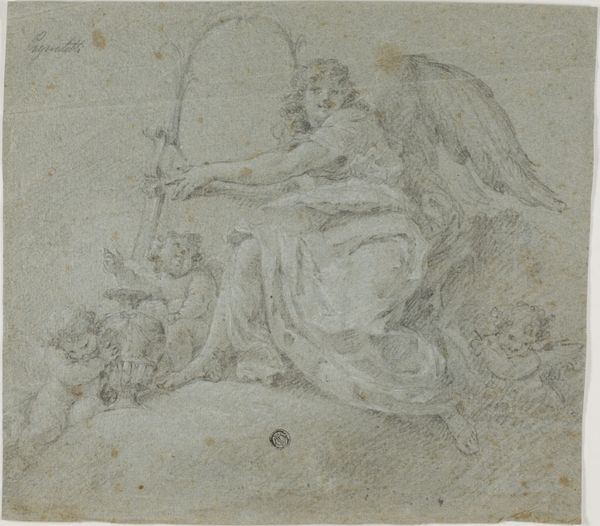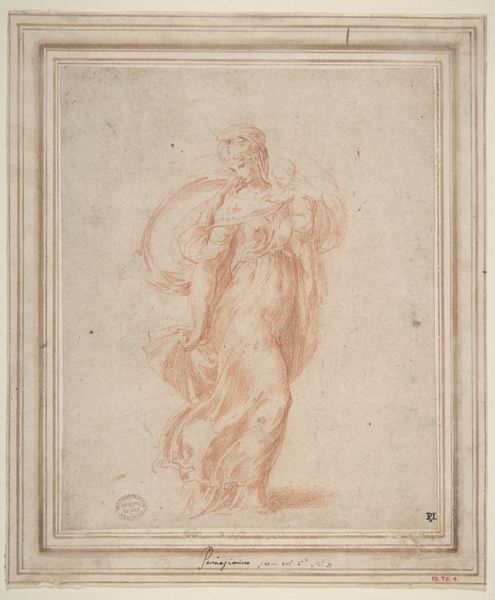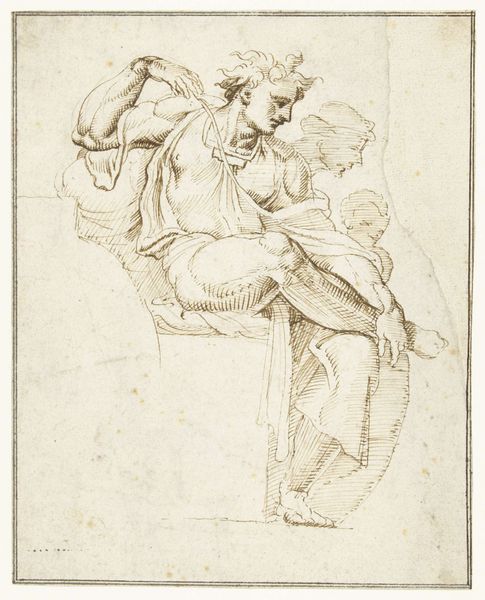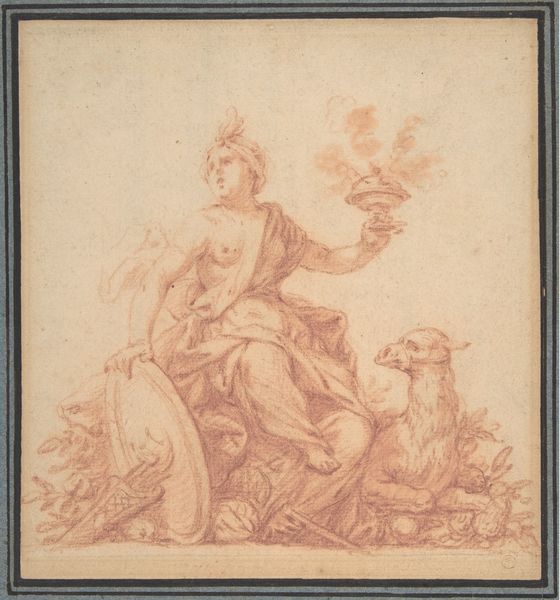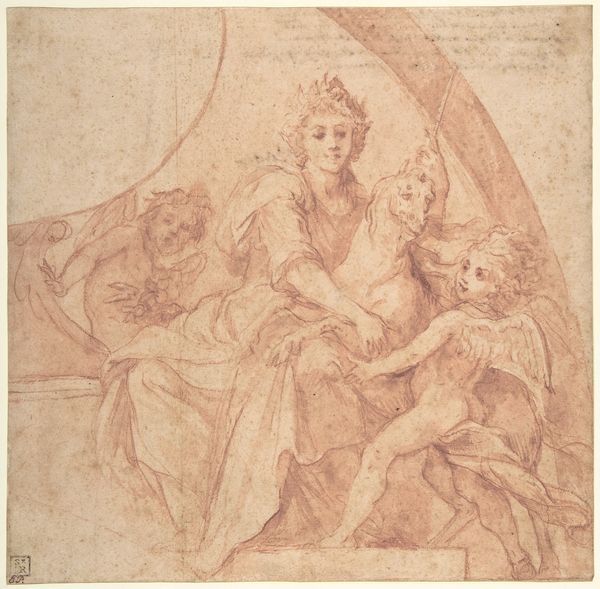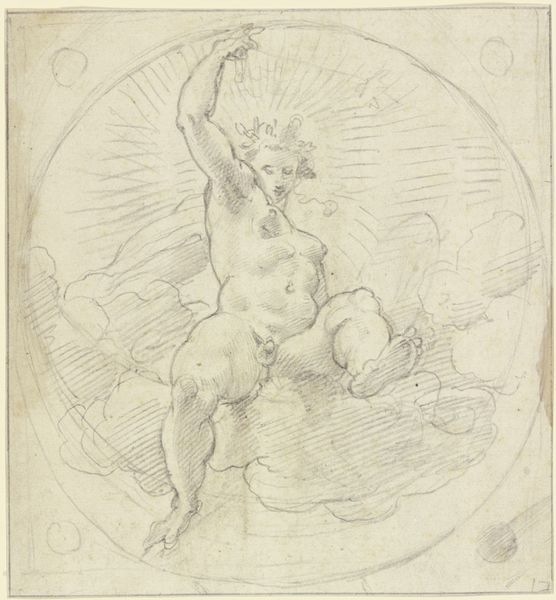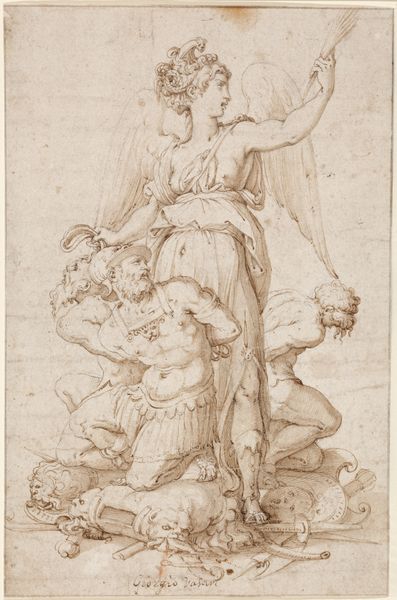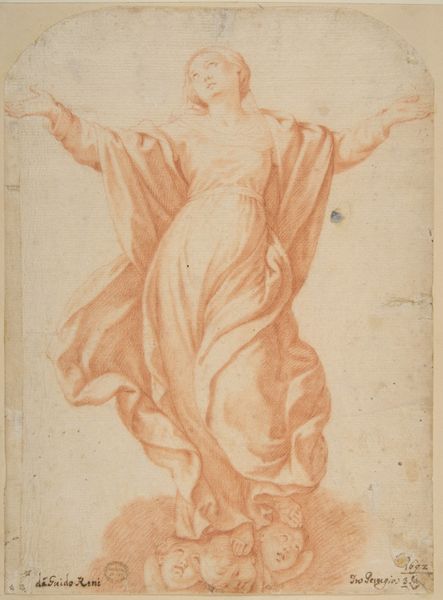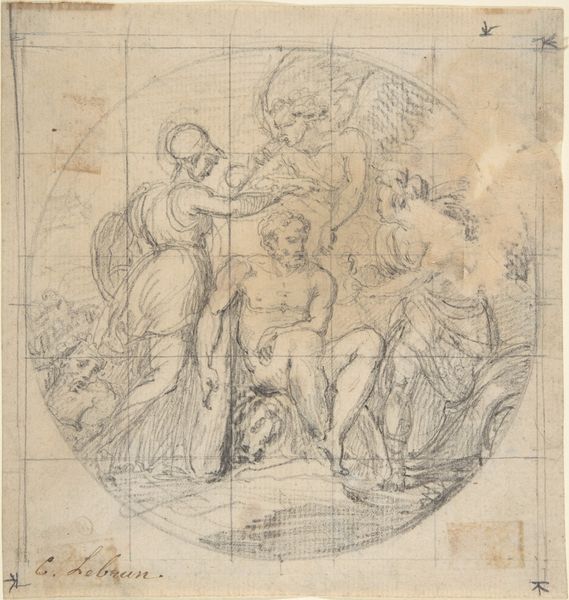
drawing, print, ink
#
portrait
#
drawing
# print
#
charcoal drawing
#
figuration
#
11_renaissance
#
ink
#
history-painting
#
angel
Dimensions: 7 1/16 x 7 5/16in. (17.9 x 18.5cm)
Copyright: Public Domain
Curator: Cesare Nebbia created this intriguing piece, Saint Matthew and the Angel, sometime between 1536 and 1614. The piece is currently housed at the Metropolitan Museum of Art. We believe that it was made using primarily ink and charcoal as print and drawing medium. Editor: Oh, wow. It feels like a dream, or a fleeting thought captured in rust-colored dust. The softness of the medium makes it surprisingly gentle for such a monumental subject. Curator: The texture of the paper is clearly visible and becomes part of the composition itself. Nebbia employs hatching and cross-hatching, a rather meticulous technique that speaks to his artistic process. One must acknowledge the expense and accessibility of the media during this time to fully contextualize its role in society. Editor: I'm so drawn to how St. Matthew seems caught between divine inspiration and writer's block! He's perched on that cloud, but the furrow in his brow tells me the words aren't flowing freely. And the angel, whispering in his ear... is it guidance, or gentle nagging? It’s like watching the creative process unfold right before my eyes, in real time. Curator: The historical context suggests a society where religious commissions held substantial weight and influence. The patronage system dictated the type of resources at the artist’s disposal, and thus played an imperative role in production and distribution of knowledge during that time. Editor: The circular frame containing them both makes me feel like they are the universe contained. Nebbia reminds us that great texts are not divine dictation, but come through very human channels, struggle and collaboration! And maybe that is its own kind of sacred. Curator: Reflecting on Nebbia’s rendering techniques, the paper itself, and its accessibility contextualized in 16th-century Italy, we've offered some additional insight to this period and some things to consider during your time at the museum today. Editor: Absolutely. May you discover and channel your own sources of inspiration, like Saint Matthew! Happy writing!
Comments
No comments
Be the first to comment and join the conversation on the ultimate creative platform.
